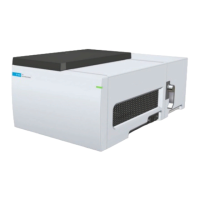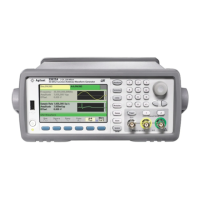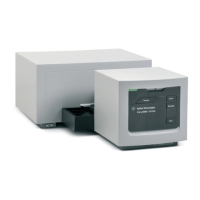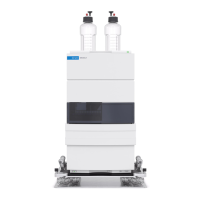257
Chapter 5 Tutorial
Signal Imperfections
4
5
Signal Imperfections
For sine waves, common signal imperfections are easiest to describe and
observe in the frequency domain, using a spectrum analyzer. Any output
signal component with a frequency different from the fundamental (or
“carrier”) is considered to be distortion. Those imperfections can be
categorized as harmonic distortion, non-harmonic spurious, or phase
noise, and the are specified in decibels relative to the carrier level, or
“dBc.”
Harmonic Distortion Harmonic components occur at integer
multiples of the fundamental frequency and are usually created by non-
linear components in the signal path. At low signal amplitudes, another
possible source of harmonic distortion is the Sync signal, which is a
square wave with many strong harmonic components that can couple
into the main signal. Although Sync is highly isolated from the main
signal outputs in the instrument, coupling can occur in external cabling.
For best results, use high-quality coaxial cables with double or triple
shields. If Sync is not required, leave it unconnected or turned off.
Non-Harmonic Spurious One source of non-harmonic spurious
components (called “spurs”) is the digital-to-analog converter (DAC) that
converts the digital representation of the waveform into voltage.
Nonlinearity in this DAC gives rise to harmonics that can be higher than
the Nyquist frequency (125 MHz) and will therefore be aliased to a lower
frequency. For example, the 5th harmonic of 30 MHz (150 MHz) could
create a spur at 100 MHz.
Another source of non-harmonic spurs is the coupling of unrelated signal
sources (such as the embedded controller’s clocks) into the output signal.
These spurs usually have constant amplitude and are most troublesome
at signal amplitudes below 100 mVpp. For the best signal purity at low
amplitudes, keep the instrument’s output level relatively high and use
an external attenuator.
Phase Noise Phase noise results from small, instantaneous changes in
the output frequency (“jitter”). On a spectrum analyzer, it appears as a
rise in the apparent noise floor near the frequency of the output signal.
The phase noise specification represents the amplitudes of the noise in 1-
Hz bands located 1 kHz, 10 kHz, and 100 kHz away from a 30-MHz sine
wave. Be aware that spectrum analyzers also have phase noise, so the
levels you read may be include analyzer phase noise.
